KE ARAH PENDIDIKAN MUZIK YANG CEMERLANG, GEMILANG DAN TERBILANG
“Towards an Excellent, Magnificent and Exceptional Music Education”.
(PRESNTED BY JOHAMI ABDULLAH @ JOE CHELLAH, D.N.S., A.N.S., P.J.K)
At The 3rd Malaysian National Conference for Music Education on 28.11.05
at Universiti Pendidikan Sultan Idris, Tg. Malim
INTRODUCTION
BISMILLAH HIRRAHMAN NIRRAHIM.
Assalammualaikum and Selamat Sejahtera. Puan Pengerusi Majlis, Dato Dato, Datin Datin, Honored guests, ladies and gentlemen.
I am most thankful to Allah s.w.t. for giving me the good health and cheer to be able to stand in front of all of you today and speak once again at this auspicious forum. This is indeed a great honor for me to be invited here to speak up on issues involving music education in Malaysia. Please note that I used the terms “speak up” and just not “ speak about” because a lot has been spoken and still is being spoken. Without much ado please allow me to proceed.
As most of you know music as well as music education is a passion with me. They remain so even after my retirement from the Malaysian Education Service almost nine years ago. However, I still perform professionally occasionally. I am fortunate because in my lifetime, I have had the opportunity of witnessing first hand, the various phases of educational innovations literally evolving before me for about five decades now. I say this because between 1950 and 1959 I was a student in the once illustrious High School in Muar and then in the education service both at schools and in teacher education between 1960 and 1996.
Of late there has been much talk from our policy makers about providing a world class education in Malaysia. Such talk perhaps does not take into consideration the true state of affairs in our public education system especially in the primary and secondary schools. This aspiration stems from our economic planners and their desire to earn big bucks from overseas by attracting foreign students seeking cheaper education to our shores. Frankly, I have no negative thoughts towards such aspirations. But first, I think, our own needs and priorities have to be straight. Let me quote a Malay proverb that aptly describes this condition in very simple language. “Menyusu kera di hutan, anak kebuluran di rumah” which when translated means “feeding the monkey in the jungle while starving one’s own child at home”.
It is my contention that our own children need to have a world class education first. Currently, our children are being mentally “impoverished and starved” in the schools with a totally lopsided approach towards education that ignores music and the arts subjects as being equally important in the curriculum. Frankly speaking, there is a lot to rectify in the Malaysian education system with regards to what we provide for the young especially in the arts. Many people are beginning to notice this flaw and talk openly of such things that are not right in the schools. Thus the theme for the conference “Ke- Arah Pendidikan Muzik Yang Cemerlang, Gemilang Dan Terbilang” (CGT for short) is indeed an apt and timely one.
“Life can only be understood backwards, but it must be lived forwards.”
- Soren Kierkegaard (1813-1855) – Danish philosopher.
“Pendidikan Muzik” is easy enough as it refers to any form of formal education in music being done in Malaysian institutions of learning and that “Ke- Arah” means “In the direction of” or “Towards”. Cemerlang translates as “excellence” while “gemilang” means “magnificent” or “glorious”. “Terbilang” can be translated to mean as “being among the few that really count or simply as “being exceptional”. Thus, what we have here today is the topic that loosely translates as “Towards an Excellent, Magnificent and Exceptional Music Education”.
Now, all the three adjectives above have a common “flaw” that is time based. Simply put, the said CGT values are relative to time and place. Whether it is cemerlang, gemilang or terbilang the quest and search for CGT can be very elusive based on common perceptions of them. For example, something that is perceived to be CGT at one point can become not so CGT when something better comes along at a later period. The wheel, for instance, was probably considered the most excellent invention of the time before gears and pulleys or the internal combustion engine was invented. Similarly, the bow and arrow would have been indeed a formidable weapon until gunpowder was discovered to dramatically change the ways of war and combat. If I am not wrong, the possession of superior firearms was one significant that helped the Portuguese to overpower the local inhabitants and capture Melaka in 1511. Therefore, time and place are also variables when we talk of excellence with CGT. Therefore, seeking CGT in music education requires a willingness to discard outdated approaches with a newer philosophical thrust based more on pragmatism rather than conservatism.
Strictly speaking then, a true success story in music education is yet to be found anywhere in the world bearing in mind that the search for it is a never ending one. A significant portion of the world music education community looks to USA for inspiration but even the music educators there are themselves perpetually dissatisfied and are continually striving for their own CGT. It is this high degree of dissatisfaction and dissent that keeps the quest for CGT an ongoing affair. This feeling of not being satisfied with something is already considered as a good is a primordial human tendency that I believe is genetically engrained. If it were not so, we humans would still be living in the cave and be utterly satisfied with doing so.
THE DIVERSITY OF INSTITUTIONS
At the risk of over simplification, I dare say that what we have in Malaysia is a diverse “cacophony” of institutions serving an equally diverse spectrum of music education aims and objectives. This is so because in such a small country we are disproportionately heterogeneous in more ways than we dare to admit. Thus music education in Malaysia is definitely not a uniform and monolithic structure. Perhaps it should remain so in order to accommodate the varied groups and interests. The mere mention of “music education” brings different semantic associations to the different peoples in Malaysia. Here is an analogy. If we mention the word “food” to an American Black, various possibilities immediately appear in his/her mind based on his/her personal experiences. Similarly a completely different set of semantic associations will appear in the mind of Japanese at the mention of the very same word. In a similar way the different types of music educators in Malaysia have their own versions of what music education is and what it is not. In Malaysia we also have the traditional divide of “playing by heart” and pakai note– the “rote versus note thing”. The different types of schools as well as the training of the music educators bring about yet more different types of music education content, approaches and instructional styles. Even the various types of schools that are operating in Malaysia today are so varied.
Public / Government Funded Schools
SK’s - Sekolah Kebangsaan- instructional language: Malay
SJK’s - Sekolah Jenis Kebangsaan-- instructional language: Chinese or Tamil
SM’s - Sekolah Menengah-- instructional language: Malay
SMAR’s - Sekolah Menengah Agama Rakyat – instructional language : Malay
SMK’s - Sekolah Menengah Kebangsaan-- instructional language: Chinese
SMB’s - Sekolah Menengah Bantuan – instructional language: Malay and Chinese
SIBP - Sekolah Integrasi Berasrama Penuh- instructional language: Malay
SAP - Sekolah Asrama Penuh- instructional language : Malay
Others - Special schools ( Juvenile Centres, For the Handicapped)
instructional language: possibly Malay only
2. Private
a. International schools – Primary, Secondary and Pre-University types (English)
b. Kindergartens - Malay, English and Chinese
c. Music Schools- English & Malay
d. Individual Tuition – ABRSM & Trinity College based - English
3. Institutions of Higher Learning
a. Public Universities – Malay and English
b. Colleges ( Private and Govt. Funded) – Malay and English
c. Academies e.g. Akademi Seni Kebangsaan - Malay
There are many music students in the universities who look upon fellow music education students in a condescending way. These students are registered as performance majors in the respective music departments and consider themselves as more “hip” than the music education students. I have singled out this particular lot because many of them finally end up teaching music when reality sinks in that there are not enough orchestras or music ensembles around to employ all of them here in Malaysia. Only a handful become professional musicians in the music industry. Moreover, most of such students are actually students who have had private tuition on the piano and have signed up as music majors with another instrument such as the violin as a second study. If I am not mistaken not a single such university student is present here today. These students tend to alienate themselves from music education until the cari makan (earning a living) need forces them to teach music and become what else – a music teacher.
A private piano teacher grounded purely in the London based Associated Board of Royal Schools of Music (ABRSM) or Trinity College of London background is another type of music educator with different views on curriculum and teaching methods. However, I believe that the CGT factor can cut across all the different groups by accepting a common philosophy towards music education and its goals. A music advocacy campaign or program should be able to bind all the different categories together. We will discuss this aspect later.
LEARNING FROM OTHER CIVILIZATIONS
For any country or civilization to progress it must learn from the experiences of more developed cultures or civilizations. There definitely is no need to re-invent the bicycle. This cross-civilization borrowing has happened all along at any given point in recorded history. There has always been some leading civilization somewhere that was setting trends in all almost areas in the arts and the sciences. For example, Greece and Rome rose to become even greater civilizations with the funded experience and progress acquired from earlier civilizations like Egypt and Byzantium. With the fall of the Roman Empire the Islamic Empire took over as the most dominant civilization of the period with great centres of learning in Cordova, Cairo and Baghdad. The famed Al Azhar University is from this period in human history when the very concept and fundamentals of university education were first laid. Arabic became the leading academic language of the time. European scholars flocked to these centres of learning to learn from their Arab masters because of their thirst for knowledge and self advancement. This quest for knowledge even overshadowed any possible European prejudice towards the Arabs whom they might have admired but could have also detested as they were of a different faith.
Today, there is hardly anyone who can dispute the fact that the Caucasians and more specifically the United States of America (USA) are at the forefront of just about any field of study. Most people just refer to them as the West. The university that I went to in USA, the University of Iowa for example, had such an impressive reference library on Islam that really shocked me. There were books on Islam in just about every major language in the world. Such a collection may not be matched even by our own universities or those in other Muslim countries of today.
The USA controls the internet and cyberspace too. Just last week I read of a shutdown of web services to one country. The USA also has the most formidable war machinery the world has ever seen. Japan rose to capture world attention in the early 20th century by learning and imitating from USA to an extent that they were even able to challenge their “masters” – lawan towkay as we say. Pearl Harbor was destroyed by planes from aircraft carriers using the very same stealth tactics, knowledge and technology learnt from the West. Japanese submarines and aircraft carriers used Western technology just as this Fujitsu laptop of mine too is modeled along original American ideas. Today Japan has risen literally from the ashes by assimilating the same technology of the country that defeated it with the bombing of Hiroshima and Nagasaki. All malice and hatred was put aside by the Japanese for their own progress. India, Pakistan, China, North Korea and Israel did not invent new types of nuclear bombs but have copied them from the West.
It is my strong contention that we in Malaysia have been right in this matter of learning from superior civilizations from the beginning itself. We have never stopped learning from others since the earliest days when Indians first made contact with the Malay Archipelago. This must continue if we want CGT in our music education.
Early Indian works speak of the first Indians who had ventured across the Bay of Bengal in 100 B.C and brought with them a pervasive culture with Hinduism and Buddhism sweeping through the Indo-Chinese and Malay Archipelago lands bringing temples and Indian cultural traditions. The local chiefs began to refer to themselves as “rajahs” and also integrated what they considered to be the best of Indian governmental traditions with the existing structure. Such is our Malaysian pragmatism that continues to this day.
Today we are looking North, South, East and West in almost all spheres of human endeavor to progress and we are already capturing world attention – something that was not so just two decades ago. Today, we have many music educators in Malaysia who have been trained in the West and have brought over many ideas learnt there to Malaysia. Many of these innovative ideas are already functioning and operational.
We in Malaysia must not forget to thank our earlier educational planners who saw such a need from as early as the Merdeka days itself when teachers from Malaya were sent to teacher colleges at the Malayan Teachers College at Kirby and Brinsford Lodge in England. Later on in the 1970’s there was a conscious effort by our government to improve music education in Malaysia when the earliest Malaysian music educators in the government service such as Khoo Soon Teong A.M.N., Basil Jayatilaka, Ranji Knight, Nazri Ahmad A.M.N., Puan Seri Shamsiah Hashim and Fatah Karim were all sent to the United Kingdom to study music in the ABRSM tradition that was perhaps the only known tradition in Malaysia at that time. For some us it remains so.
From the 1980’s onwards Malaysian music educators were also sent to USA. The late Khalili Ahmad was even sent to Indonesia for his first degree. In the 1990’s New Zealand and Japan were added to the list. I do not think that there is any other government in the world that does this sort of thing which is why our government should be the last to be blamed if we are not satisfied with the current state of music education in the country. I am waiting for the day when our government will send select music educators to study music in India and China too as there is so much that we learn from these countries in which leading musicians like A.R. Rahman make music subservient to Indian music and the Indian society of today.
Thirty five years ago the Maktab Perguruan Ilmu Khas a.k.a The Specialist Teacher Training Institute in Cheras was at the forefront of music education at the post secondary school level. Later in the 1980’s the MARA Institute of Technology too started music education programs. Today we have no less than ten tertiary institutions offering music studies. We have emulated Western ideas of pedagogy as well as examination and curriculum development over the past few decades. We have implemented them and have spent huge amounts of public funds to make music education happen. So are we getting there towards the CGT that we seek? I think we are but not quite there yet. This forum itself is a right step in that CGT direction. I hope many more will follow.
The upcoming ISME 2006 Conference to be held in July 2006 in Kuala Lumpur is one testimony to the fact that Malaysian efforts towards CGT Music Education are bearing fruit. The CGT is a package that only comes with respectable infrastructure, sound public policy, political stability and a vibrant economy. These are some of the factors that have helped us to bid successfully to host the ISME 2006. The ISME 2006 should serve as a big boost to the sinking morale of the music education community in Malaysia. It may also open the eyes of all Malaysian parents. The Prime Minister has agreed to be the Patron and concert attendances by Duli Yang Maha Mulia Seri Paduka Baginda The Yang Di Pertuan Agung (H.M. The King ) and also four full Ministers has been confirmed. No less than the reputed music educator Professor Emeritus Bennett Reimer of The Northwestern University in Chicago has lent his support, confidence and testimony to the Organizing Chair of ISME 2006 Prof. Madya Dr. Ramona Tahir and her ISME Conference Organizing Team. She was his student at Northwestern University in Chicago. Yes we are on the right path towards CGT I must say.
But many of us are still not satisfied with what is taking place in Malaysian public schools with regards to music education per se. We wrongly blame everybody from the government (the usual scapegoat) to the Jabatan Pendidikan, teachers, headmasters and the parents – even the students. Actually all of us are to blame. It is like someone caught in a traffic jam and cursing everybody for it and not realizing that he/she himself/herself is contributing towards the traffic jam. This dissent has been with us for almost twenty years now. So what is wrong?
THE ROOT OF THE PROBLEM
New Straits Times 27.11.05
Even cartoonists are getting to the root of the problem which is a clear over-emphasis in Mathematics and Science subjects. The public Music Education Curriculum in Malaysia was first introduced into the Primary Schools via the Integrated Primary School Curriculum (KBSR) in 1983. This move was primarily conceived to balance the existing syllabus of the time that was perceived as being too academically oriented. It was also targeted to improve the Reading, Writing and Arithmetic which have always been referred to as the 3Rs. Now we had music which is also referred to as another R (as it is part of the ‘Rts group). So actually the 4 R’s were targeted originally. Music teachers were delighted to realize that music was finally being recognized.
Now after 23 years (1983-2005) has the new curriculum met with its objectives? It can be disturbing when even the present Hon. Minister of Education laments the fact that about 100,000 pupils are “not able to read, write and count” and that his ministry “had been aware of this (problem) for a long time” (NST 13.10.05). One wonders what else the Ministry is aware of or not aware of “for a long time”. We hope that the slow progress that music education is making in the public schools is one of them.
Although a cursory glance at the progress of KBSR and KBSM from inception till now might show a brilliant track record on paper, it is sad to observe that the many of the desired outcomes of KBSR are yet to materialize. Thousands of music educators have been trained and billions of government funds used up for music education since then. Even the first batch of KBSR students are themselves parents now in their early thirties.
It is regrettable that after two generations of Malaysians had undergone the KBSR syllabus the over-academic orientation first perceived in the early 1980’s has not changed and in fact has worsened. The initial happiness, expectations and euphoria experienced by the teachers and parents of the early KBSR years now appears short lived.
The working curriculum for music at the school level is very varied. Some schools have opted not to have music at all while in reality the subject should be on the timetable. There are many complaints from music teachers that music is relegated to a very unimportant role in the school curriculum. It must be noted here that while most music teachers are frustrated over this sort of anak tiri treatment, there are some who actually feel relieved. This group is more than willing to teach other subjects such as Bahasa Malaysia because such teachers who although comprise of trained music teachers but happen to be hopelessly incompetent in musical skills per se.
Such a crop of teachers was a direct result of the sudden demand for literally thousands of KBSR music teachers that the Ministry of Education had to train in the early KBSR years – The “instant music teachers”. It was principally this factor that forced the recruiting process to ignore and/or compromise on the many important attributes that a music teacher ought to have such as musical competencies, musicality and even an aptitude for teaching. Quality was compromised for quantity. This is a mistake that cannot be rectified short of terminating the services of such “trained” teachers altogether. Such mistakes should not be repeated anymore and should remain a thing of the past. I myself developed a musicality test for music teacher applicants to undergo but it was not strictly applied and many student music teachers with no musical inclinations were selected and “trained”, passed and posted as music teachers.
But as impatient as we are to see immediate changes we must remember the saying that “Rome was not built in a day”. In terms of priority, the bare necessities of life come first. For example, in setting up a household the first items sought are beds, sofa sets and dining tables apart from kitchen utensils. It is only after the basics have been acquired that the aesthetics of the home become a concern. We then might start looking for curtains, ornaments, lamp shades and carpets. Then even some plant landscaping may be considered. Finally we think of TV set and also a home theatre system comes to mind. It is only much later on that buying a piano crosses the mind. In short, music and the arts are seldom considered the bare essentials of life anywhere in the world. But it is such considerations that enhance the quality of life in a society. I think that we have reached this stage in Malaysia when the quality of life should be addressed.
Today there are more parents who are willing to send their children for activities involving music and the arts although such parents are already quite affluent. Even the choice of activities have widened to also include the study of ethnic instruments (sitar, er hu) or dance ( ballet, Latin, ballroom, bharatha natyam and zapin.). En. Suhaimi ( Pak Ngah) in Kuala Lumpur has classes for young children (mostly Malay kids) in dance, music and song. His young dancers are known as Swatari and have taken part in even national cultural productions. Most of these children are Malays and come from more affluent homes. But this trend is elitist at best. To my mind, music education is a basic human right that should be made available to one and all and not a commodity meant to be bought only by the affording elites in a society.
Dr. Bennett Reimer is a well-known and respected authority on the philosophy of music education and curriculum design worldwide. Reimer’s major book dealing with his views on the arts in general is called A Philosophy of Music Education, published in 1970. Reimer believes that musicality is inherent in each individual and that aesthetic experiences in music is not solely for the elite. Thus we should also strive to reach and also preach to parents that aesthetic experiences in music are desirable for the total development of the child. It should be made available to one and all.
SOCIETAL CONSENSUS FOR MUSIC EDUCATION
To most people, music is merely seen as serving a hedonistic function in the shallowest sense of the word. Simply put, they believe that music is strictly for fun and enjoyment. In itself there is nothing wrong with such a perception but it is only a small part of what music can do in one’s life. Today music is being treated more as a visual art where the looks of the performer by far overshadow their musical talent if any. This is the way most people in Malaysia look at music now. As I have mentioned earlier we ourselves may be part of the problem. This orientation is something that true music educators cannot condone. Complaints about the mediocre musicality and talent of the winners of favorite TV shows such as Akademi Fantasia come to mind. Music is an aural art first and foremost period.
Formal music programs in the world have a clearly stated philosophy as well as the objectives. Let us briefly look at the stated Philosophy, Approaches and Purposes to Music/Arts Education in some other Asian countries. Some excerpts are reproduced below as found in MENC’s National Association for Music Education (NAME) website at http://www.menc.org/ .
MUSIC EDUCATION IN SINGAPORE
Philosophy, Approaches and Purposes to Music/Arts Education
Education in Singapore aims to prepare children for the process of life-long learning to cope with the constantly changing world and to build a responsible, cohesive and robust society. The school curriculum and education programs are aimed at producing a well-rounded, morally upright individual who is fully conversant with the latest technological advances and yet in touch with his or her Asian heritage.
MUSIC EDUCATION IN JAPAN
Philosophy, Approaches and Purposes to Music/Arts Education
Due to abrupt changes in Japanese society, such as changing and diversifying values, advancing international integration, and intense mega-competition, there is growing concern over the current state of Japan's culture. On January 6, 2001, the Japanese government established the Council for Cultural Affairs. One of the avenues in which the council promotes its work is through a very unique perspective on music, arts, and cultural education and involvement.
The renewed interest in cultural heritage, the arts, and music is in part attributed to an increasing desire for spiritual fulfillment. Studies have shown that a greater share of the Japanese population are seeking fulfillment through spiritual enrichment rather than material affluence. As such the Japanese people are also rediscovering traditional culture. For instance, about 60% are interested in traditional folk performing arts, such as kagura (sacred Shinto music and dance).
MUSIC EDUCATION IN INDONESIA
Philosophy, Approaches and Purposes to Music/Arts Education
The educational system in Indonesia is controlled by the central government. The State Policy of Indonesia, pancasila, is the guiding principle behind all educational philosophy and practice, especially pertinent in music.
Belief in the One and Only God (Kebangsaan): This principle of Pancasila reaffirms the Indonesian people's belief that God does exist and that there is a hereafter.
Just and Civilized Humanity (Kemanusiaan): This principle requires that human beings be treated with due regard to their dignity as God's creatures.
The Unity of Indonesia (Kerakyatan): This principle embodies the concept of nationalism, of love for one's nation and motherland. It envisages the need to always foster national unity and integrity.
Democracy Guided by the Inner Wisdom in the Unanimity Arising Out of Deliberations Amongst Representatives (Keadilan Sosial): Pancasila democracy calls for decision-making through deliberations in order to reach a consensus.
Social Justice for the Whole of the People of Indonesia (Ketuhanan): This principle calls for the equitable spread of welfare to the entire population, in a dynamic and progressive way.
The government views music education as a means by which to preserve Indonesia’s varied cultures and by which to counter the effects of Westernization. Music education was selected for this purpose for a number of reasons. It was selected in order to counteract the effect of American and European popular music on Indonesian youth; because music, as in all cultures, is a large part of Indonesian culture and history, and probably more so than any other culture, Indonesian music plays a large role in everyday life in the form of folk music.
It is interesting to note that music education in Indonesia is used to thwart the effects of American and European popular music influence on Indonesian youth. One wonders whether this aim has been achieved if at all and if so, to what degree. In Japan “a greater share of the Japanese population are seeking fulfillment through spiritual enrichment rather than material affluence”. As such the Japanese people are also rediscovering their own traditional culture. I believe that this is an inevitable step once a certain degree of material affluence is reached. Nearer home we see that in Singapore “the school curriculum and education programs are aimed at producing a well-rounded, morally upright individual who is fully conversant with the latest technological advances and yet in touch with his or her Asian heritage”.
Yes, we ought to study and even emulate non-Western countries in our quest for CGT in music education. More inter-Asian educational tours for our educational planners and music teachers must be undertaken. We ourselves may have something to offer others. This kind of global exchange is one sure way to obtain our version of the CGT music education that we seek. We still need to continue sending our select music educators overseas in greater numbers to study from the undergraduate level itself. Strictest competency levels in music and English must be ensured for any such scholarships. These returning graduates will then be able to keep our music education in the CGT course that has been already set.
PARENTAL ATTITUDES
The materialistic focus and thrust among Malaysians that is so clearly evident in the last twenty years or so has definitely affected attempts to improve music education in Malaysian schools. Schools are seen merely as institutions through which children can acquire paper qualifications and not in the traditional sense where children are grounded in morals and also receive a wholesome education.
The affirmative action of the government’s New Economic Policy that first came into play in the early 1970’s is the principal cause for this as it offered hitherto unheard of avenues for materialistic and social advancement to the Bumiputra community and indirectly to the other Malaysians too. Malaysians were now set upon a stage of materialistic advancement that brought them out of estates, kampongs and new villages on a hitherto unprecedented scale. Scholarship opportunities and the number of institutions of higher learning began to spring up in a vibrant and rapidly growing economy fueled by the discovery of that “black gold” petroleum around the same period. The stage was set for the paper chase and the “rat race” began and continues unabated.
It is actually simple to understand and a straight forward affair. Good results in the public examinations earned scholarships and social upward mobility was more or less guaranteed. In the 1970’s and through the 1980’s very bright children were automatically being offered scholarships for overseas studies especially from the Bumiputra communities. It was becoming a standard practice until quite recently when more and more local universities were set up to accommodate tertiary education needs. But the trend was set amongst the Malaysian populace, both, Bumiputra and non- Bumiputra alike. Paper qualifications mattered most and overshadowed just about every other consideration. Tuition centres and individual tuition masters grew in great numbers. Tuition masters have more or less mastered “formulas” for assuring their students of obtaining A’s in the subjects that they teach. They can even guarantee distinctions with their formulaic method of teaching and learning which has little room for creative or divergent thinking. Thinking “out of the box” seems a more current way of saying this. Even poorer parents pay money that they can ill afford for such private tuition.
COMMON SCENES: ANY SIGN OF FUN HERE?
“All work and no play make Jack a dull boy”
Nowadays, tuition is given even to the intelligent ones. Such children should be able to score the highest number of A’s even without any tuition but parental fears and concerns keep such children at tuition centres all the same. This trend of distinction getting has to be maintained throughout the child’s school career or the child would be considered a failure. It would be no exaggeration to say that the greatest fear of many parents today is having a child who fails to get distinctions and getting ahead of the others at school. The current Malaysian record is that of a girl who scored eighteen distinctions in one examination. I wonder what her general knowledge is like. But this should not be cause to worry. She is a candidate for the “Malaysian of the Year Award”.
Parents start cross-checking with friends and relatives when results of public examinations are announced mainly to compare how the other students had fared. “How many A’s did Ahmad get?” The newspapers and television too often go overboard in the frenzy as they highlight individuals, schools, headmasters and even states with the “best” results with a consistent and predictable manner for days at times. School children are highly stressed out by such expectations. Children who passed their examinations but with less impressive results tend to be treated as failures in life even by their own parents. There has even been a case in which a student committed suicide because of not obtaining straight A’s. Even in high profiled schools there have been cases of severe beatings and in one case even resulting in death of a hostelite. Nowadays we read of brutal killings and road rage with no rhyme or reason to justify such senseless behaviors. Children are clearly losing their cool in this highly stressed educational environment that they have become almost inhuman. Herein lays the clear proof that the subjects in the humanities stable such as music, theatre, drawing, art and craft, history and geography need to be restored to their rightful place in the working curriculum of the schools. These subjects are for the soul and can serve a much needed therapeutic function.
So, in this scheme of things then, is it surprising then that parents treat all extra-curricular activities as unimportant? Music, which is in the formal curriculum itself, is being given such a low priority. School sports, debate and music competitions together with a host of other such inter-school activities of yesteryears are seen as a waste of time. This sort of near obsession attitude towards seeking paper qualifications by parents has had an evolutionary kind of effect on our classroom teachers. It has made them more docile and they tend to function with an apathetic “tidakpathy” attitude. It is quite common for a parent who is collecting the report card of a poorly performing child to be openly advised by the class teacher to start providing some private tuition for the child.
Until this sort of societal and parental thinking changes towards music and the other liberal arts subjects we are only going to continue getting a back seat ride for music education in the foreseeable future. How can we change this mindset that has become characteristic of all Malaysians irrespective of race, color or creed to become music education friendly? That is the challenge.
ENFORCING THE MUSIC PROGRAM
Generally speaking self discipline is not a naturally acquired trait in humans and Malaysians are certainly no exceptions. Most of us only tend to behave and observe rules and regulations when there is sufficient supervision or enforcement around. The enforcing party must also have the power to enforce and even apprehend the offender. There have been accusations thrown at the governmental agencies by voluntary organizations for not enforcing and overseeing many aspects of Malaysian life that are seen as going wrong. Examples abound from the existence of illegal immigrant settlements right before the eyes of penghulus and ketua kampongs to unbridled land development and excessive timber logging. It takes an agency like TV3 to expose pot holes and clogged drains which just seem to be invisible to the eyes of road and health inspectors. More recently, even the enforcement agencies such as the Malaysian police and the Customs Departments are in the limelight for the wrong reasons. The indiscriminate depletion of coral reefs, the week-end lumba haram by motorcyclists are more examples of seeming “lawlessness” in the country that go on not because of a lack of laws but because of inefficient and/or insufficient enforcement. It has indeed become a Malaysian malady which has seeped its way into the Malaysian education system as well.
Now how does this relate to the implementation of the compulsory music program in our schools? Who is responsible to report the headmaster who could not care two hoots about actually having music meticulously taught and put in the timetable? What do we do with a teacher who thinks he is religious enough and “issues” his own fatwa or Islamic religious ruling that music is prohibited in Islam and implants such wrong ideas in impressionable minds? Have we seen action being taken against any such person who strays from parliamentary gazetted requirements of the national curriculum? Who is responsible for taking action against such a school administrator or over-zealous teacher? These people to my mind are plain traitors to the nation and are sabotaging the objectives as enshrined in the National Education policy and Wawasan 2020. In reality, the police can take action against such people if a police report is lodged against such persons for not following the Education Act which is truly an act of parliament.
To my knowledge all state supervisors for music education (Penyelia Muzik dan Seni Visual) are held by junior education officers and mostly non-graduate teachers. These supervisors have no administrative clout at all. Even State Directors are not known to worry about school heads who do not implement the official curriculum at the grassroots level. This state of affairs is plainly wrong and has to change.
School headmasters should be held fully responsible and accountable for everything including the success of the music program in the school. It should matter importantly in their yearly assessment. They should be penalized if the school music program is not well managed even though every child in his/her school attains maximum distinctions in the public examination. Such administrators ought to be warned and sacked if they pay no heed and continually manipulate the working curriculum in the school. Now, is this not a dream of all true music educators? Wishful thinking perhaps? Yes, empires were made from dreams and we should start dreaming in this direction right from now if we are serious about any CGT music education in Malaysia. As it is, most music teachers in schools already feel helpless with some already getting used to such a state of affairs. The MAME could be a platform for music teachers to air grievances in such matters. It can then even “blow the whistle” and seek redress.
The Federal Inspectorate of Schools (FIS) or Nazir Bebas is another agency in the Education Ministry’s machinery with a long record. It should truly exert its bebas (free) status and start doing justice to itself and the nation by reporting schools that do not follow the curriculum. More enforcement officers may be necessary to ensure that music programs are truly practiced and enforced. Without such seriousness of purpose from perhaps the Minister himself (who may not be aware of such flaws as he has unwittingly admitted) and respective education bigwigs (both state and district) the problem shall remain forever and never go away. One official from this agency has reported the many flaws that FIS has noted in the process of teaching and learning and reported it to a gathering of music teachers just this year. These rare statistical findings that have been revealed are alarming and should shock any concerned party. The FIS’s observation related to the teaching and learning of music in the primary school classroom is quoted verbatim as follows:
1. DISEDIA BERDASARKAN:
* Sukatan Pelajaran & Huraian Sukatan Pelajaran Terkini
* Potensi murid (90% Tidak)
* Untuk sepanjang tahun
* Perancangan guru sendiri (90% Tidak)
2. RANCANGAN PELAJARAN HARIAN
* Objektif eksplisit ( 70% Tidak )
* Strategi/aktiviti yang sesuai
* Kenyataan pencapaian objektif (refleksi) dicatatkan
( 90% Tidak )
3. PENYAMPAIAN
Dimulakan dengan satu Set Induksi yang menarik perhatian dan
merangsang minat murid seterusnya menjurus ke arah kesediaan
minda murid untuk belajar. ( 95% Tidak )
4. PERKEMBANGAN PELAJARAN
* Mengamalkan pendekatan daripada mudah ke kompleks
( 90% Tidak)
* Menghubungkaitkan pengajaran dengan kehidupan harian
* Menggunakan bahasa (laras dan istilah) yang tepat
* Menggunakan bahan bantu mengajar yang sesuai dan berkesan
* Mengajar berpusatkan murid ( 90% Tidak )
* Menerapkan kemahiran berfikir ( 90% Tidak )
* Membuat penilaian berterusan ( 90% Tidak )
5. Perkembangan Pelajaran
* Teknik menyoal murid :
- mengikut pelbagai aras kognitif ( Taksonomi Bloom) ( 90%
Tidak )
- soalan dari mudah ke sukar ( 90% Tidak )
- soalan bertumpu dan bercapah
- memberi masa untuk murid berfikir
- mencungkil jawapan daripada murid
- memberi respons yang sesuai terhadap jawapan murid
( 70% Tidak )
* PENGLIBATAN MURID :
- membuat persediaan awal ( 90% Tidak )
- membawa peralatan yang diperlukan ( 90% Tidak )
- berinteraksi secara aktif
- menunjukkan kemahiran secara individu/kumpulan
6. Perkembangan Pelajaran
* Latihan dan tugasan :
- mengikut tajuk yang diberi
- mengikut potensi murid ( 90% Tidak )
- menekankan prosedur dan arahan yang diberi
( 90% Tidak )
* Penutupan :
- secara kognitif ( 90% Ya )
- secara sosial ( Tidak )
7. Selepas P&P
- membuat rifleksi terhadap pencapaian objektif ( 90% Tidak )
- mencatat rifleksi (70% murid mencapai objektif, 30%
murid tidak mencapai objektif) ( 90% Tidak )
- merancang RPH berikutnya berdasarkan potensi murid
( rujuk catatan rifleksi ) ( Tidak )
8. Pemeriksaan Latihan dan Tugasan Murid
Memeriksa secara konstruktif :
- menunjukkan kesilapan murid
- memberi ulasan yang membina ( Tidak )
- memberi penghargaan ( 80% Ya )
- memastikan murid membuat pembetulan
( 90% Tidak )
The above study, if correct, reflects the true learning and teaching process taking place in Malaysian primary schools. What is the big idea of bringing such statistics to the attention of the powerless music teachers? Was it done to ridicule the music teachers? It is like “preaching to the choir” because they already know about it. Instead, such information should be channeled upwards to the FIS Pengarah himself and copied to the other Directors at EPRD, CDC, the Education Ministry and to the Minister concerned himself. The Minister of Education is probably not aware of such horrible negative statistics but instead gets is a non-existent rosy picture from his Directors.
The Curriculum Development Centre (CDC) has been designing, churning and modifying all sorts of music programs ever since it was entrusted with the task. In the earlier stages it even functioned without a music educator actually being in charge. That was when CDC-friendly music teachers and college lecturers were roped in to help. Perhaps this practice still continues. The position that is allotted for the music educator at CDC is still a junior one which in itself also reflects the way that the CDC views the importance of music education. This too has to change.
The Educational Planning and Research Division (EPRD) is an agency in the Ministry of Education whose very existence is not known to many teachers let alone the layman. It is cloaked in such secrecy that it seems to operate almost like the Special Branch at Bukit Aman or the KGB and Mosad. Most of us are unaware of the research that they do. Are you? Can anyone here tell me if they know of any of its journals or publications as a research agency? I am not sure whether this agency (or any of the others for that matter) is even represented here at this national conference on music education. What for instance is the research done in areas covering the success of KBSR music? It is sad that research is not an “in thing” in much of our own music education circles and yet we are dismayed when the world refuses to acknowledge the “excellence” of our educational institutions like the recent uproar and fuss over the drop in ratings of the University of Malaya.
I believe that one easy way to check on whether our primary music curriculum has been successful is to look at average graduating primary school kid and his/her musical knowledge, skills and abilities. Most of us know that children who leave primary school:
Cannot sing the “Negara Ku” properly
Have not heard of or sung their respective state anthem
Generally have wrong perceptions of music having been more influenced by Malaysian TV than by Malaysian music teachers or the music curriculum.
Have no lasting love for the recorder or melodeon which are readily discarded.
Are not able to notate even simple rhythms or melody.
Are not able to read or understand music notation.
Cannot distinguish between most musical instruments either aurally or visually
Cannot talk intelligently about any music including their preferred variety or their favourite singer, say Siti Nurhaliza or Mawi.
Are unaware or disinterested in the different kinds of music in Malaysia itself let alone musical cultures around the world – both current and the past.
Have developed a mono-focal taste in music - usually of the Malay pop variety.
MUSIC EDUCATION AT THE VARIOUS SCHOOL LEVELS
First let us take a look at music education at the pre-school level. What happens in both the private and public pre-schools is anyone’s guess. Most prominent educators have come to realize that the preschool years offer the most optimal time for learning and developing musical abilities. Preschoolers love to play and are not at all afraid of making mistakes. Giving young children the chance to experience varied musical activities can also assist them in improving language skills, self confidence, independence and overall better control of their “small world”.
It is hoped that curriculum developers will examine the role of music education at the kindergarten level and develop modules when introducing educational framework for operators of preschools in the country. It is now compulsory for all public and private kindergartens in Malaysia to follow guidelines as stipulated by the Ministry of Education’s Kindergarten Syllabus. But then how closely the guidelines are followed is going to be questionable if the way the compulsory primary school syllabus itself is still not being fully implemented.
Educational research on the nature of intelligence and brain function gives promising indications that could change the face of education. Howard Gardener has for instance counted music as one of the major intelligences that a human being has. Like other intelligences in computational and psycho-motor areas, music too deserves an equal rating and weightage from the pre-school level itself.
Music at the primary level, I was informed, has also been considered the most popular subject in the KBSR by the Curriculum Development Center in its unpublished research and findings. This of course could be true for the wrong reasons though. For instance, it could be so because there are no “real” tests or “examinations” to worry fear and dread about. Moreover, the music lesson offers plenty of scope for both orderly as well as disorderly fun. In most cases it could be the latter. Having a college trained “music educator” who habitually sings out of tune could also add to the fun. I know it is not nice to highlight such things but it is the plain truth.
This “sin” of having out-of-tune teachers has been perpetuated from the teacher training intake procedure itself when a clearly non-musical candidate is selected just because he/she says “ Saya minat muzik ” translated into “ I like/love music”. Lowered student intake requirements into teacher training colleges for music teachers have allowed such bottom of the barrel input to be selected and “trained” as a “matter of policy” as I was once told by the Director of Teacher Training Division when he visited the college in which I was serving then – the STTI.
The credits or pass in Mathematics and English traditional requirements for any aspiring teacher were also waived for music teacher candidates. In the first place, such candidates had only applied because they were clearly unqualified for other subjects including art and physical education. The only other subject with similar laxed entry rule was for Ugama (religious) teachers. It is no surprise then that for over two decades now we have generated a pool of teachers who continue to feel uneasy about teaching music and hide behind the essentials of music notation and theory which are more knowledge based than skill/talent based.
At the secondary school level a Music Education Curriculum was introduced in the 1996/97 school session on an experimental basis. About twenty schools in East and West Malaysia were selected for this programme. Music was offered as an elective subject with the intention of providing continuity to the KBSR Music Curriculum albeit after a fourteen years delay. A startup grant was provided to the chosen schools for the KBSM Music Programme and Trained Music Teachers at the Graduate level were assigned to teach the subject. In some schools more than one teacher was teaching the subject. Little has moved forward after eight years of this KBSM Music program implementation.
Despite having a significant increase in the number of graduate music teachers from the local universities in recent years it is sad that any secondary school aspiring to introduce this new KBSM curriculum has to come up with its own funds with very little or no help financially from the Ministry of Education. Efforts to raise funds on their own are indeed rare. No surprise then that many steer clear away from such aspirations of having a KBSM music programme. This kind of thinking of course deprives the masses from obtaining the KBSM public music education package. For parents who can afford it, the private sector music schools are the next best option.
In many such secondary schools the music graduates posted there are assigned to teach other subjects that they are not trained simply because the school was not having a KBSM music program. What a waste of resources! The EPRD which plans these things ought to follow up and do independent research on these matters. This reminds me of the common lament of yesteryears that “the left hand does not know what the right hand is doing” in reference to the poor coordination between the various arms of the Ministry of Education such as the EPRD, CDC, the Teacher Education and School Divisions.
Some secondary schools that by tradition had been having Brass/Concert/Wind /Marching Bands and Choir do carry on the tradition. This same small number of schools then boasts of many shields and trophies from the music festivals and competition that are held annually. However such music related co-curricular activities remain a domain of a few selected secondary schools in the country. Just look at the annual National Day Parade and the National Marching Band Competition organized by the Ministry of Education. Year in and year out we can notice the same schools participating and winning very predictably.
It is abundantly clear that as the nation develops in other areas the arts are blatantly ignored and if this situation continues like this the 2020 vision will remain unattainable. If finances pose the problem a grant scheme can be activated to enable more interested schools to develop musical activities. If this can be done for the Languages, Mathematics and Sciences (and more recently Sports) why not do the same for Music and the other arts too.
Music at the tertiary level is slowly picking up as more and more tertiary institutions add the study of music to the list of courses offered. There is no uniformity in the names or departments for the music programs at this stage. Some programs even come under the purview of a non- music department like Anthropology. Rumor has it that the National Arts Academy or Akademi Seni Kebangsaan (ASK) would soon become a university. Tahniahlah. Currently ASK has diploma level courses already. However, rumor also has it that the music department in one prominent university that has already been having it for a few years is going to be closed. I hope it is not true. Such a retrograde move may not be the wisest thing to do. It is not congruent with national priorities and Vision 2020. If things have gone wrong then correct them instead of closing the department. Everything can be fixed with correct strategies and using the right people. They are doing it at MAS you know and not shutting down the airline. Bring in people who can perform without fear or favor to turn around things and trouble shoot.
I now firmly believe that no less than the Prime Minister himself has to intervene to stabilize music education at this level. Except for UITM and UPSI the direction of the other universities is not clearly evident. At least the CDC gives some semblance of direction to the schools. I wonder who or which agency has been entrusted with this responsibility at the tertiary level. It could also be that full autonomy is being given to the universities in this matter. Perhaps the new Ministry of Higher Education already has this mechanism or needs to develop one. The Malaysian Association for Music Education (MAME) is always there to assist anyone in such matters. Perhaps one day, like the MENC in USA, MAME will be able to offer advice and sanction music education programs in Malaysia. I believe that the day is not too far away. To be fair, the Vice Chancellors (VC), particularly the VC of UITM, Dato’ Professor Dr. Ibrahim Abu Shah, have been supportive of music education. I am sure that all will support our CGT efforts at their level too. Meanwhile, we would like to see more research and music education journals being published in keeping with the tradition of universities and tertiary institutions. Some Malaysian music educators such as Dr. Tan Sooi Beng and Dr. Minni Ang are already noted for their research contributions but the number of such researchers remains too few.
Authoring of academic music education books in the Malay language or even the English language is another effort that the music education in Malaysia needs very badly. My book entitled “Pendidikan Muzik Semasa” first published in 1993 by Dewan Bahasa dan Pustaka (DBP) remains the best solo effort simply because, to my knowledge, it is the only book in the discipline that has been written in Bahasa Malaysia to date. This book is clearly out-of –date. This is a disgraceful situation if I may say so and does not reflect too well on our own music education community. DBP too has not contacted me for any possible revision since 1995. It too has other priorities with music at the bottom of the list I suppose.
Our quest for CGT could, as I have said earlier, come about from emulating what is happening in developed countries like Germany and Japan where music is mandated by the Ministry of Education that every child Grade 1-9 receives two hours a week of sequential music instructions from a music specialist. This instruction in all elementary and all junior high schools from its inception to its completion is centered on
1. the appreciation of Music and
2. expression or making music
Every school in Japan, for instance, is equipped with the instructional materials and instruments needed to enable the teachers to do their job thoroughly. These materials and equipments include song books, rhythm instruments, and piano, desk top keyboard for each student and many other supplementary teaching and learning aids. Each school building has a room exclusively dedicated to music instruction. Quality is never sacrificed when providing for a child education. Thus Music is part of the school facility and not treated like an orphaned “anak angkat”. It is an integral part of basic education curriculum for the first nine years of schooling. In addition, optional music instruction for such as ensembles, choruses, band and orchestra are given at school after formal school hours. This preoccupation with music as the centre and essential part of a young person’s school day is not exclusive to Japan. It exists in Germany too where each student receives a minimum of two 45 minutes class periods per week in music from Kindergarten through 12th Grade. Norway would be another good example amongst many of the countries with a major commitment to music in the public schools.
The momentum in belief that music as an essential part of a youngster’s school day is growing and now spreading rapidly to even emerging as well as matured societies throughout the world. This is not to mention the growing active fostering of music outside of the school by parents in many Eastern and Western countries. How is it that the study of music has come to be so highly valued in so many countries? What has then motivated governments, educators and parents in many parts of the world to insist that music are included as an important subject in every child’s education?
In Germany, the answer to these questions appears to be that public demand and political response have shaped a climate which strongly favors music as expressed by a leading German music educator: “The leadership of our country and our people believe that to survive in the computer or IT age you must have music. Our leaders and our people recognize that creative, productive use of leisure time throughout life is and will be of great importance”.
Closer to home, in one recent interview with a Computer Bulletin renowned historian, author and sports critic Prof. Datuk Dr Khoo Kay Kim who was recently made the UM's Professor Emeritus expresses his views towards the preoccupation with information technology (IT) among the younger generation which has led to a grave concern that IT could have a negative effect on the young if left unchecked. He believes that the younger generation is allowing technologies to control their life. Their increasing fixation and dependence on IT is affecting their abilities to think independently and to participate in and enjoy physical outdoor activities. It is this sort of things that will help them to play a more effective role in society. He also feels that there is a tendency for the younger generation to take things for granted and it is becoming quite difficult for them to do anything on their own as they have technology to assist them in just about everything. Face to face communication is still so important in human communication. Today’s youth use cellular phones quite unnecessarily and mostly for their own delight. Even when they are sitting across each other, they phone or text message (SMS) each other. He cautions that youngsters who are addicted to technology might face serious consequences in future as they are required to play their role within the society which itself is a very complex organism. It requires each and everyone to play at least a minimum role in it. If the youth continue to be preoccupied with their computers and phones they could become anti-social and clearly display such behaviors. Technology is generally useful but people in general should not go overboard with it. The point of contention here is that it is so very important for us to have a clear balance between technology and the arts
MUSIC ADVOCACY
The ultimate goal of public music education should not be to produce students capable of concert performances but one that will allow young people to participate and interact more intelligently and in a more informed way any prevailing musical culture for their entire lives. This should be made clear to all Malaysians through a strong music advocacy program.
We must not forget that Music is also a highway for exploring the emotional and aesthetic dimensions of experience. Its creative element helps one to think “out of the box” and as such develops divergent thinking as opposed to the all so apparent convergent thinking emphasized in the current examination oriented child’s world in Malaysia. Indeed, here is where music and the other arts make their unique and most visible contribution to the overall education process.
Currently there is hardly any meaningful or visible music advocacy effort being pursued in Malaysia by any agency or anyone except perhaps MAME. No one cares it appears. Even MAME does not yet have the support that it rightfully deserves from the music education community itself to be an efficient “mover and shaker” representing music education.
Hear are some questions and answers as to why teach the music and the arts. Each and every music educator should have such information at his/her finger tips irrespective of whether he/she is a student, educator or an administrator. Active propagation of the information below needs to be done to almost propaganda levels over the print, electronic and broadcast media just like how, for example, the Transport Ministry works on road safety campaigns or the other “Tak Nak” campaigns.
We have to create an appreciable level of awareness amongst fellow Malaysians as to just how important music is and should be treated. Giving honorific titles to musicians, pop stars and composers which in itself is alright may not be the only way. We must emphasize that education without the Fine Arts is fundamentally an impoverished one which subsequently leads to an impoverished society void of quality living in the fullest sense. I sincerely believe that the lack of proper attention given to the fine arts in schools lies at the root of all the deviant social behaviors that we are seeing in Malaysia today.
Why Teach Music and the Arts?
1. Music and the Fine Arts has been a significant portion of every culture’s educational system for more than 3,000 years.
2. The Arts are the only way humans learn and judge other cultures or ages.
3. The human brain has been shown to be “hard-wired” for music; there is a biological basis for music being an important part of human experience.
4. Music and the Arts surround daily life in our present day culture.
5. Most present day artists, architects, and musicians acquired their interests during public school Fine Arts classes.
6. Only by continuing to allow students to explore these ways of learning will this portion of the economy continue to grow.
What about the claimed benefits of music education on other portions of the academic curriculum?
1. The most rigorous review of all studies (Reviewing Education and the Arts Project Report (REAP) in USA shows there are significant, reliable causal relationships between the systematic, formal study of music and gains in mathematics and in spatial-temporal relationships.
2. Brain studies show the development of more extensive neural connections in musicians.
Should Music and the Arts be used to teach other academic subjects?
1. While studies show positive influences in other academic areas, music and the Fine Arts are an academic discipline that are, as the other academics, an independent way of learning and knowing.
2. Reading, writing, and mathematics are important and all students should be successful in those areas, however none of those academic areas justify their existence on the basis of what is accomplished for another area. Each academic discipline is important for a well-rounded curriculum.
3. Music and Fine Arts are an academic area of study equal to reading, writing, mathematics and science.
Should the study of Music and the Fine Arts be available to all students?
1. Where music and Fine Arts programs have been eliminated because of funding difficulties, students have been deprived of a significant opportunity of learning and knowing about the world around them.
2. All students should be able to “elect” to study music and the Fine Arts in depth at the secondary level.
3. All students should have the opportunity to study music at the elementary level in a systematic, meaningful way.
4. If music and the Fine Arts are reserved for only wealthy schools or communities, a cultural “elite” will be created, which also creates a significant distinction of social class.
5. Music and the Fine Arts should not only be available to those children of wealthy parents who can purchase private tutors or subsidize public schools with donations to sustain public school programs, but also to students of average or low socio-economic areas.
Should Music and the Fine Arts be reserved only for those students who have demonstrated their “talent?”
1. Magnet schools and magnet programs are wonderful for students exhibiting their skill at an early age, but many students do not realize their talent at early ages. Without opportunities in elementary, middle or high schools many students will miss developing their creative and/or artistic abilities.
2. Districts or communities relying on solely on magnet programs and exclude or reduce Fine Arts in other district schools deny many students the chance to develop this way of knowing and learning.
CONCLUSION
In conclusion I pray that immediate attention be given to rectify some truly pressing concerns so that we may achieve CGT in our music education in the near future. I have much to say but the following should be enough to encompass all.
1. The Malaysian society must first consider the study of music and the arts as being equally important as any other subject.
2. Effective music education must start with young children.
3. The detestable practice of “the looting and pilfering” curricular time already allotted for music education in public schools must stop. It is a heinous “crime”.
4. It must be ensured that music teachers applying for student intake at colleges and universities must have basic musical competencies and also an aptitude for music as well as teaching it.
5. The little room for creativity that children have in the public schools system must be significantly enhanced through music education and the other art subjects.
6. Our children need more fun in the school to counter the drudgery and boredom that they encounter daily in a situation that is totally devoid of the arts and fully geared up for examinations and the paper chase. One such strong and healthy avenue for fun is music.
7. Music education content in the schools should also be geared to include material that starts from the child’s world and move away towards the unknown, from the near to the far, from the concrete to the abstract. Such approaches are the fundamentals of education as any teacher ought to know. The opposite process of this is the “mosquito coil burning” approach in which the child is first taught material from the distant past and then brought closer towards his/her world. This “from the abstract to the concrete” approach must be avoided.
8. Song literature used for music education must include material from all types of Malaysian musics of all communities – traditional, art, “pop” and global music traditions. It is a sure way to better national integration which is the main thrust of our education philosophy.
9. Children should be exposed to and taught to value and appreciate music of all cultures and from different time periods. The child may develop an interest for any one type of music but at least it will be done in a more informed way.
10. The importance of music in the curriculum must be actively propagated by the Ministry of Education through the electronic and print media and forums that are organized at the school levels.
As I have repeatedly said, music must be taught and considered important for its own sake and not merely because of ancillary outcomes such as better patriotism or enhancing the learning of language or mathematical skills. Even the ancient Chinese valued music. Confucius valued the arts tremendously and cherished it primarily as an instrument for moral education and advocated perfection of five talents in order to become a gentleman. Music is one of them. Confucius himself was a musician.
Music’s place in the curriculum is as rightful and equal in importance to any other subject. The study of music is a basic right of a child and should be viewed as such by all Malaysians. Until such a day comes, music education with a truly CGT tag will only remain a dream. Let us hope that we do not have to wait too long.
JOHAMI ABDULLAH
President, Malaysian Association for Music Education
Subscribe to:
Post Comments (Atom)



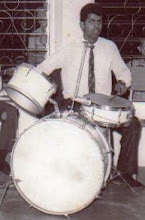

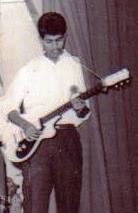


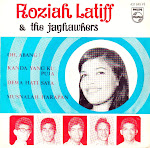



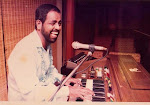

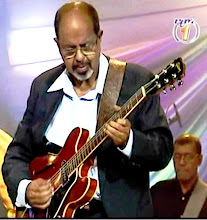



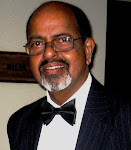


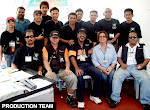
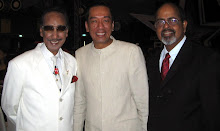

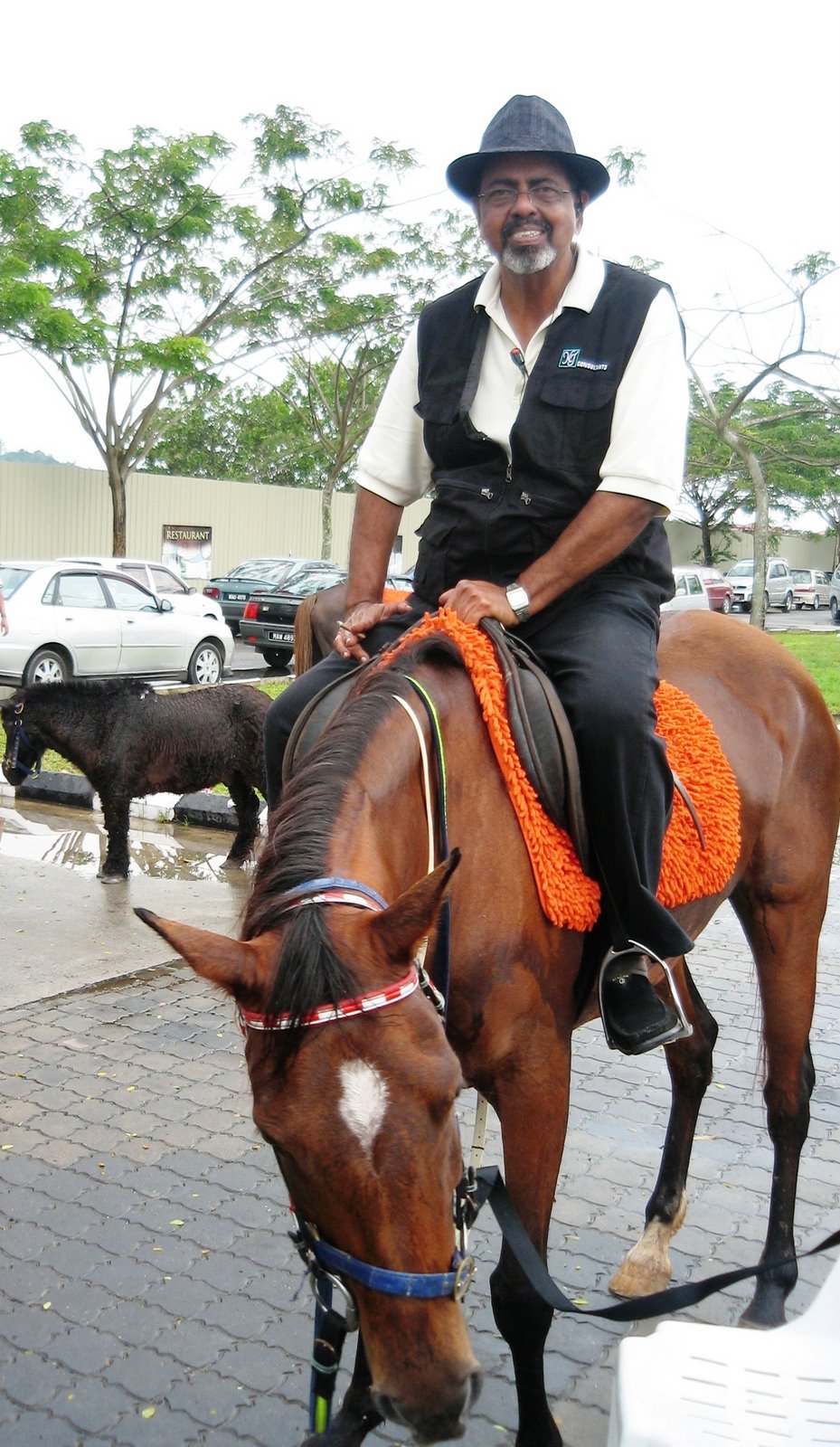











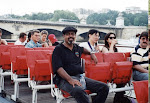



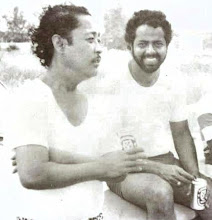
No comments:
Post a Comment